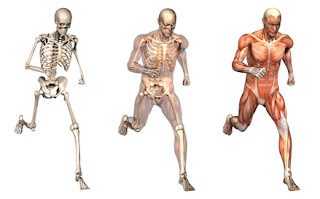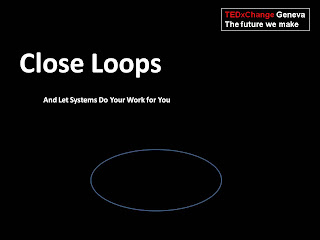In doing the research for a participants’ guide for the Facilitation learning programme we’re launching with a partner next week, I found a nice “greatest hits” collection that we made of some of our blogging reflections on the topic of making the most of internal meetings. These posts were written from inside a large organization’s learning department and give some insight into the internal dialogues, learning and engagement processes (all kinds of meetings and gatherings) that institutions convene to help work through issues and generally get things done.
I am delighted now that we captured our learning at the time in this format – a blog- and wrote it with the spirit of creating “reusable learning objects” (I was always banging on about RLOs in the organization, now that I am actually reusing them I am delighted!)
This collection of 18 posts is organized below (with summaries and links) into the following categories that explore aspects of how to Make Meetings Meaningful:
- Purpose
- Positioning, and
- Process (e.g. design, implementation, reflection)
1) What’s the Purpose?
Are we having conversations that matter?
How are the conversations our organization is having changing the nature of relationships and the way people, groups and societies around the world are thinking and behaving? In other words, to what extent are our conversations bringing about the change we seek and helping achieve our objectives? And how can we continue to improve the quality of our conversations to better ensure that they matter?
What Is the Purpose of ‘Free Coffee Mornings’?
What value do weekly free coffee mornings have in fostering staff networking and informal learning in our organization? We decided to explore the opinions of others in our organization on this topic, through a short questionnaire. Many staff commented on the exercise itself, pointing out learning about how to make the most of free coffee mornings in the future to engage with staff, about how enthusiastic staff are to express their opinions, and the importance of ‘social spaces’ and time for team-building and collaboration across ‘silos’.
You’ve Just Been to a Great Staff Meeting – What Happened?
What are some of the different purposes of a Staff Meeting?
-To update and inform staff members of activities in the institution
-To profile people who have done good work and let them share their reflections
-To maintain transparency and an open environment for sharing
-To bring staff together for a shared experience once and a while
Have you ever been to a great staff meeting? What was it about the meeting that made it useful, interesting, and made you excited to go to the next staff meeting?
Post: You’ve Just Been to a Great Staff Meeting – What Happened?
Networking – In or Out of Your Comfort Zone?
Monday afternoon, a two hour session was held titled, ‘Learn Something New: People and Networking’. The objective was to not to provide a taught course on Networking, but do create an environment where people can share and exchange about networking, and do it at the same time. … Some suggestions were offered about how we can do more networking, and how we can help create work environments where networking and interaction is one of the key objectives. Longer coffee/lunch breaks? Open spaces in the agenda for interaction? Introductory sessions which serve to connect people and help them build relationships?
2. Can Meetings be Used for Positioning?
In our day to day conversations, how do we “talk the walk”?
We’ve all heard of “walking the talk” – but what of “talking the walk”? In our day to day conversations, how do we “talk the walk” and reflect the core values employed in our work?… Our conversations can serve to enforce or discredit our messages and ourselves in powerful and lasting ways. Walking the talk is imperative. Talking the walk is so important too. People notice.
No Such Thing as a Pointless Question: The Impact of Simply Asking
The act of asking questions of an organization or group influences the group in some way. With our questions we get people to focus on something – what is that thing? What is our purpose of the question we are asking and what impact will it have on the way that person and the room think and feel? If people go in the direction you question them, where do you want them to go?
Me and My Multiple Intelligences. We and Ours.
In our organizations, what are we doing to make sure we interact in ways that address diversity of intelligences and learning styles? And how can we engage the multiple intelligences of our colleagues to best answer this question?
3) How Effective is our Meeting Process?
a) Design and preparation
How Old is Your Knowledge?
Workplace learning is 20% formal and 80% informal. Informal learning is an interesting combination of reading, internet surfing and search, audio-visual inputs, speeches and presentations, meetings, and conversations in the cafeteria, corridors, and on the bus. For the most part in these activities learning is quite accidental and not a deliberate objective. There are learning opportunities around every corner. What are you doing to structure your informal learning?
What Kind of a Discussion do You Want?
It is thought-provoking to hear people come away from discussions that they have lead and say, “Why do you think people reacted that way to my ideas?” Another question they could ask might be, “What could I have done differently to develop a generative discussion rather than a debate?” … If one sets up an academic situation, then people will be happy to react as though they are in one! Rarely do people throw a professor or a keynote speaker for that matter a soft ball…
A Courtroom or a Concert?
If I was going to run an important meeting, which environment would I want to create? How would I want my participants and speakers to feel when they left the room? What would I want people to get out of it? Would it be a zero sum gain, or would it be a step of a creative, hopeful process? When I sent out my next invitation for the group to meet again, what would be people’s reactions? Would they be excited that their favorite group was holding a concert again? Or would they dread the eyes of the jury?
Bottoms on Seats – How Do You Make That Memorable?
People travel to the venue, they walk into a bustling and colourful conference venue (exhibitions, restaurants, meeting spaces, and all), then they walk into their first of many small workshop rooms and basically sit there (different small rooms of course) for 75% of the conference… We spend a lot of energy thinking about communication to conference participants and the media around the event to make it colourful, interesting and engaging; how can we make sure that this does not stop at the workshop door?
Leveraging the Wisdom of Crowds in our Organization
Next week, our organization is hosting a week of meetings, bringing together in headquarters senior staff from our offices around the world. During these meetings, how smart will our crowd(s) be? How smart could it/they be? As session organizers, what can we do to make our crowds as smart as possible – better at solving problems, fostering innovation, coming to wise decisions, even predicting the future?
Lights, Camera, Action: Working with Star Speakers
Here is a lesson that I absolutely need to learn as a workshop facilitator: No matter how well you brief a plenary speaker who is a subject matter expert, they will go over the time. … Plan for it in as many ways as possible, especially by allocating substantial discussion times (even after they get cut down) so that this critical part of the learning process is always there to help people follow your star.
b) Implementation
Using Storytelling to Generate Ideas: We Just Went to a Great Staff Meeting – What
Happened? (Reprise)
We decided to use our own communications unit meeting to generate additional creative ideas, and then to share them with the team who is responsible for our staff meetings… Here was our question: You just went to a great staff meeting – you left excited, energised and hopeful. Tell us – what happened? We first worked in pairs to create our stories, then shared them with each other. Here are some of the ideas that emerged.
Ballroom Learning and Large Groups: Using Socratic Questioning
I am sitting in a hotel ballroom with 140 people at a conference titled, “Capacity Development Strategies: Let the evidence speak” and the level of some of the participants has dictated a certain room layout and format – we have a head table with four speakers and 140+ people sitting shoulder to shoulder behind tables in the room… If learning is the goal, and this formal room layout is a given, how might we best work with this format for optimal exchange?
What Exactly Are You Facilitating?
I have had a few people ask me about the value of facilitating other people’s workshops. What does that contribute to the grand scheme of things? The overall goal is not to just to move people around a room for a day. A good Facilitator is a process person with their eye on outcomes and learning – there is reason for every interaction, what is it and how can a process be designed that makes those conversations easier, smoother, and more productive? After all, facilitation comes from the Latin word “facil” which means to make something easy. Good facilitation means making group dialogue, decision-making, information sharing, and learning processes easier and more effective for everyone: your workshop hosts, your participants, and yourself.
c) Reflection and follow-up
Helping Other People Do Great Work
How transferable was my experience last week and what can it prompt me to learn about how to help our guest speakers do great work for us at the upcoming workshop? What more could I do in the next few days that could make all the difference for a first-timer, to create an environment where people are proud of their contributions, others appreciate it, and generally helps everyone do great work?
Dialoguing about dialogue
“Listen to one another with your full attention. Think about what is said, how it is said and the intent behind this. How does it make you feel – physically, intellectually and emotionally – as a participant in this dialogue process? How does it make others feel?” There is still much to explore and emerge about the role of dialogue in change processes. Along the way, how can we replicate such experiential approaches in our own institutions for collective learning about the important role of dialogue in change?
I found it interesting to look back, now that I am working from the outside and don’t always have seamless, day-to-day contact with such micro-learning processes, to remember how valuable it was to capture this nuanced process learning through a blog. Even after some time I find the learning very clearly reusable.
 Attending TEDActive 2011 back in February – and joining a couple of hundred other organizers of TEDx (independently organized events under license from TED.com) for workshops, back stage tours, talks and tips – I tweeted about my TEDx learning. For posterity, I’m now sharing the tweets here:
Attending TEDActive 2011 back in February – and joining a couple of hundred other organizers of TEDx (independently organized events under license from TED.com) for workshops, back stage tours, talks and tips – I tweeted about my TEDx learning. For posterity, I’m now sharing the tweets here:



























